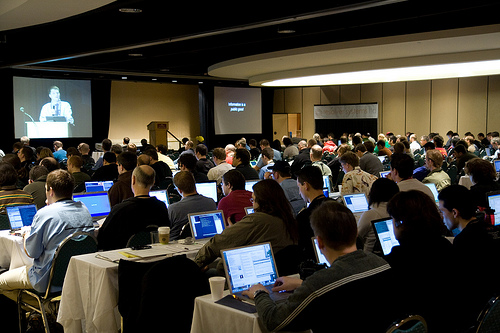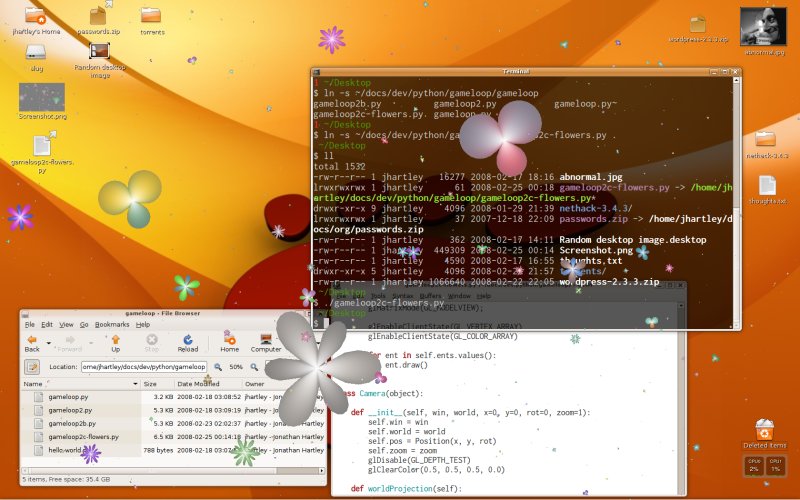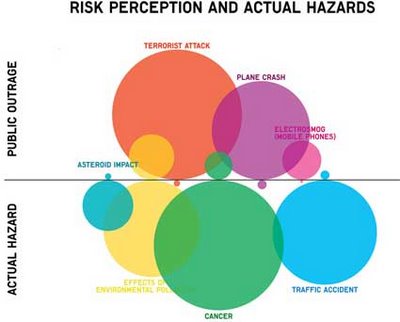Where you gonna be?
[Google Earth and whereyougonnabe from Peter Batty on Vimeo]
Peter Batty has a funky screencast of his incipient social networking slash geolocation application, Where You Gonna Be? which allows you to see when your future itinerary crosses paths with other people you know. Initially implemented as a Facebook app, it now features Google Earth integration. It's currently restricted to beta testers, but should be opening up to all comers soon.
One day, functionality like this will be part of the ubiquitous and unobtrusive infrastructure of society. For now, there's WYGB.




 {.alignleft
.floatleft}A friend who is a doctor is considering learning Python as
his first programming language, to do some processing on some research
data. He asked me to give him the 30 second elevator pitch for Python,
to evaluate whether it's a wise choice. I enjoyed constructing the reply
so much that I decided to post it here, just in case it helps anyone
else in a similar situation.
{.alignleft
.floatleft}A friend who is a doctor is considering learning Python as
his first programming language, to do some processing on some research
data. He asked me to give him the 30 second elevator pitch for Python,
to evaluate whether it's a wise choice. I enjoyed constructing the reply
so much that I decided to post it here, just in case it helps anyone
else in a similar situation.








